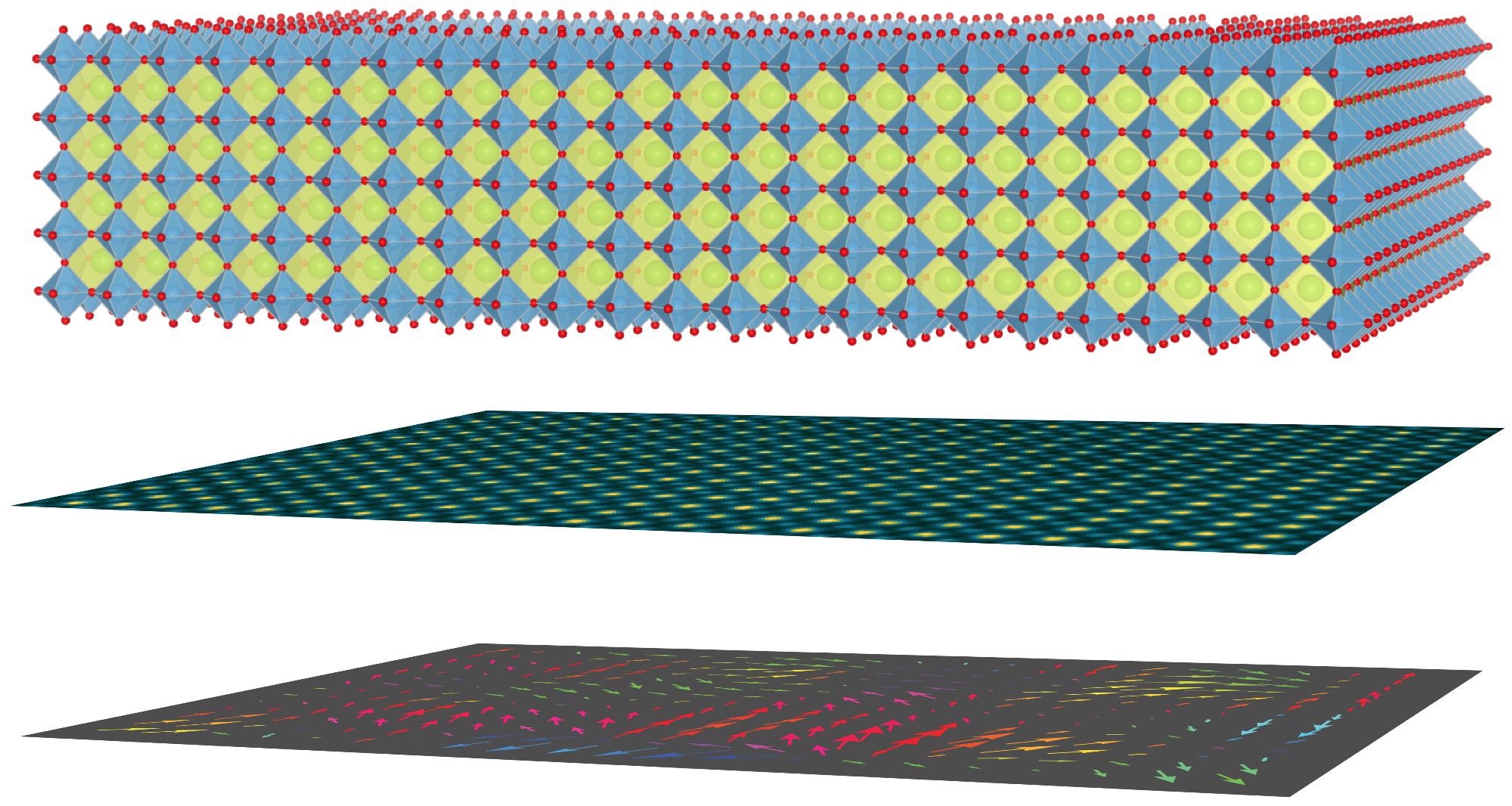Jun 10 2021
EPFL scientists have made a major discovery about the structure of barium titanate — a material used in day-to-day objects. The scientists’ findings now question the prevailing concepts on the displacement of the material’s atoms.
 The atomic structure of barium titanate. Image Credit: © 2021 EPFL.
The atomic structure of barium titanate. Image Credit: © 2021 EPFL.
Barium titanate is a ferroelectric material that is used in almost all electronic devices, including smartphones, computers, and even electric cars. For example, this material is used for making capacitors and sensors to run such vehicles.
A single smartphone generally has around 700 capacitors containing barium titanate, and trillions of these capacitors are made every year.
Dragan Damjanovic, Professor and Head of Group for Ferroelectrics and Functional Oxides, School of Engineering, EPFL
But despite the extended use of barium titanate, researchers are yet to fully understand its working mechanism.
“There are of course theoretical models out there, but some of their key predictions have never been experimentally confirmed. So that’s what we set out to do,” added Damjanovic.
One of the World’s Most Powerful Microscopes
Senior scientist Emad Oveisi from EPFL’s Interdisciplinary Centre for Electron Microscopy has proposed that Damjanovic and his PhD student Sina Hashemizadeh use his center’s Titan Themis — one of the most powerful electron microscopes in the world — for their research work.
The Titan Themis allowed scientists to view the atomic structures of barium-strontium titanate and barium-titanate in the cubic phases. That study was performed back in 2015 when the team acquired the first images. But it took them another five years to check and confirm the results.
Until now, researchers believed that the atoms move in several directions in a very short timeframe. But our experiments showed that they tend to prefer certain directions, meaning there are nanometric-sized areas where all the atoms move in the same way. That completely changes how we view these materials and their atomic structure.
Emad Oveisi, Senior Scientist, Interdisciplinary Centre for Electron Microscopy, EPFl
Since their results contradicted the current understanding, the scientists wanted to be more certain that they were right. Hence, they tested and validated their results many times; this also involved peers in Austria, Slovenia, and Japan. This was the reason why it took them five years to conclude the results. The study was recently published in the Nature Communications journal.
Small-Scale Phenomena with Large-Scale Repercussions
Sophisticated image analysis methods allowed the scientists to identify where exactly the atoms move in an orderly fashion within the material.
When we talk about movements, we’re actually referring to displacements that take place on a picometer scale—that is, one order of magnitude smaller than the atoms themselves.
Emad Oveisi, Senior Scientist, Interdisciplinary Centre for Electron Microscopy, EPFl
“Even though the displacements are extremely small, they have repercussions on a much larger scale. For instance, if we expose the nanometric areas we identified to a high-frequency electric field like those in smartphones, the areas heat up,” added Damjanovic.
The research would be significant in further understanding the energy loss occurring in these kinds of materials. So, what is the next step?
“The research is never-ending! The question of whether the nanometric displacement really does play a role in heating the material needs to be tested. And if it does, the next step will be to develop materials where the size of the displacement area is minimized in order to enhance the material’s properties,” concluded Damjanovic.
The study was funded by Swiss National Science Foundation, No. 200021-159603.
Journal Reference:
Bencan, A., et al. (2021) Atomic scale symmetry and polar nanoclusters in the paraelectric phase of ferroelectric materials. Nature Communications. doi.org/10.1038/s41467-021-23600-3.